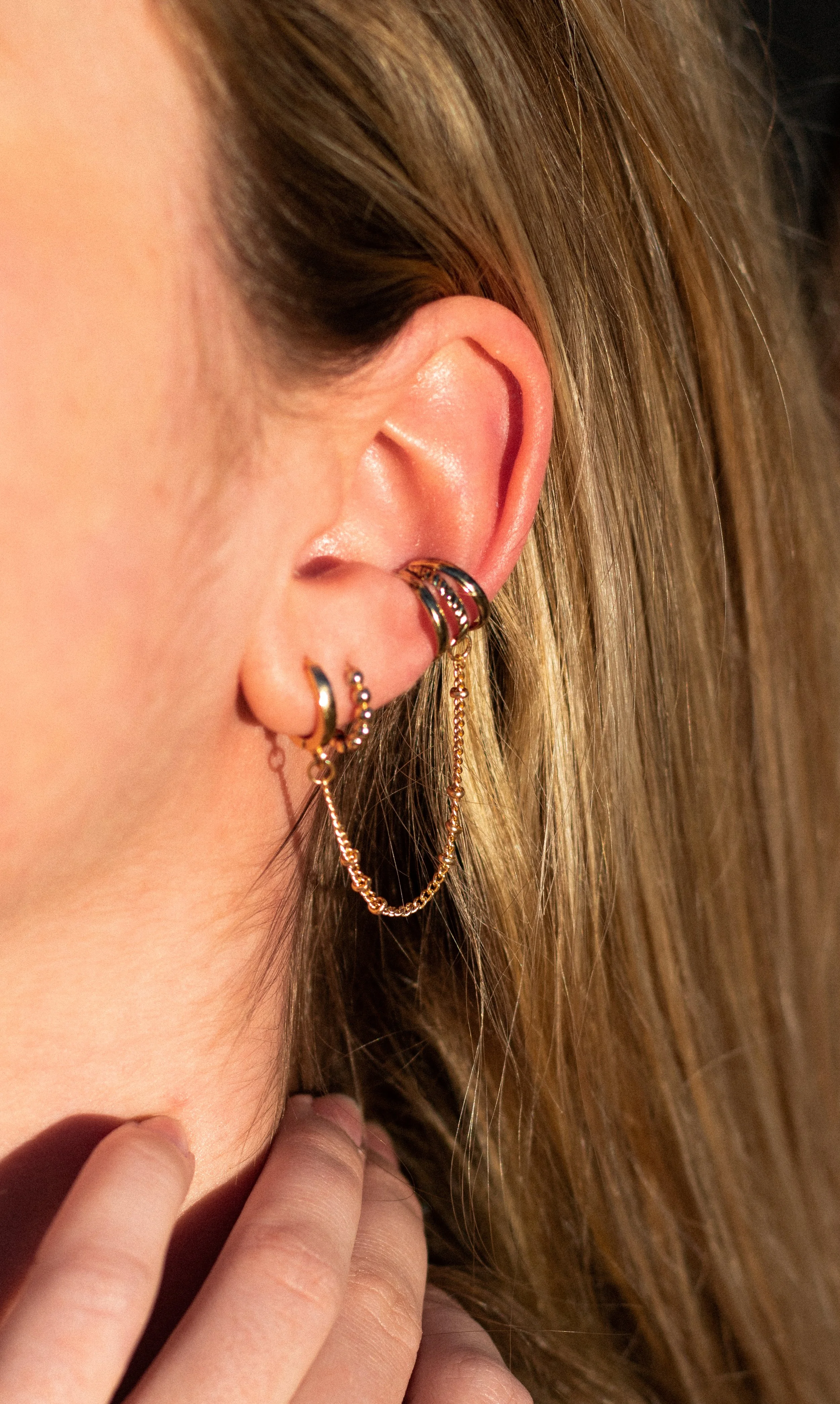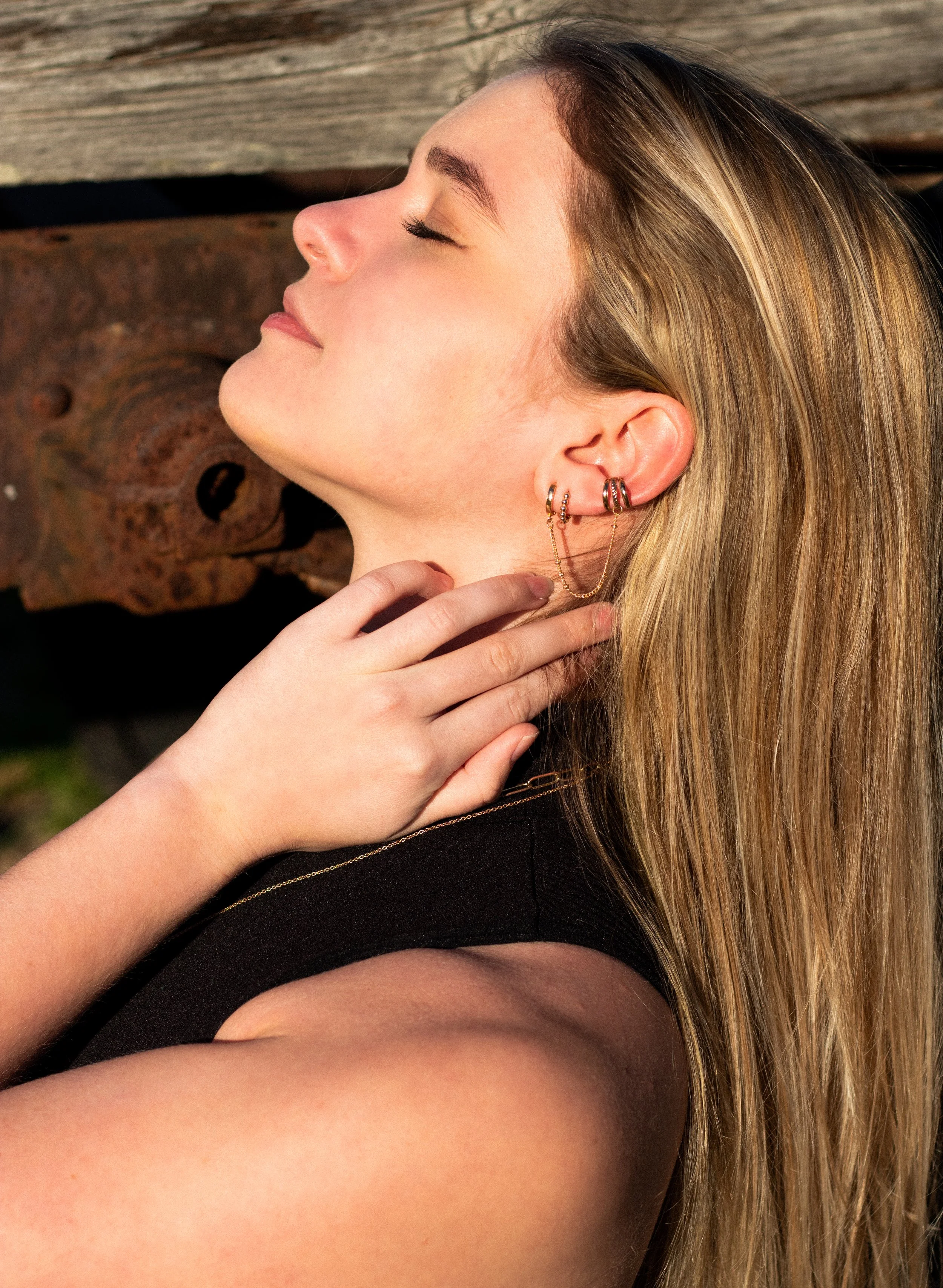Constellation Piercings: The Art of Creating your Earscape
Over the past few years, the popularity of specially curated ear piercings has skyrocketed across the United States. With cartilage piercings like the rook, conch, daith, and tragus becoming increasingly popular in today’s biggest trends, many have begun the exciting journey of creating their own earscapes. Whether it is a few dainty piercings or stacks up the outer ear, this form of body art has endless possibilities. If you are unsure of what design would suit your ear shape best, many opt for a constellation artist, who can create a custom look for you and your ear shape, including unique jewelry selections.
Body Electric Chief Piercing Artist Brian Keith Thompson was one of the first on the body art scene to introduce the idea of constellation piercings. While many prefer to accumulate the different aspects of their earscapes over time, the thrill seekers among us trust artists like Thompson with the process. While it can be exciting to get them all done at once, many of the designs are curated for the unique jewelry selections and may not be as flattering with other pieces.
Piercing artists, like other body art specialists, are trained to know what would fit you best. Ear shapes can be tricky and all piercings won’t work on every ear. When choosing a piercing, or giving your artist creative freedom, it is important to take your biology into account. For example, industrial piercings, a bar that goes through two points on the top of the ear, won’t work for everyone. In addition, lobe piercings, while being a simple and fairly easy choice, also have the potential to be limited by the size of your ear lobe. While some people can stack three or four studs on their ear lobe, others might not be able to.
Before adding a new piercing to your ear scape, it is very important to first do some research. What level of pain should you expect? How long will it take to fully heal? When can you change the jewelry? These are all very important questions that unfortunately, are often overlooked in the excitement of getting a new piercing. While research can put a damper on your impulsive new piercing, it is very necessary. Here are some popular piercings accompanied by their estimated pain level on a scale of 1-10, how long they usually take to fully heal, jewelry to pair them with, and some general information about each one.
The Basic Lobe Piercing
Pain Scale: 3/10
Healing Time: 6-8 weeks
Jewelry Pairings: The possibilities of jewelry pairings on this part of the ear are practically endless, including studs and hoops, as well as stacking multiple lobe piercings up the length of their ear.
General Information: This piercing is a great start for beginners or people who are inexperienced in ear piercings in general. While some piercing shops will offer the option of using either a piercing gun or a needle, a needle is usually preferable.
The Helix Piercing
Pain Scale: 4/10
Healing Time: 4-6 months
Jewelry Pairings: Since helix piercings are unique in the way that they follow the curvature of your ear, many people opt for uniquely styled curved jewelry, as well as small hoops.
General Information: With this piercing located in the cartilage part of your ear, it is highly recommended to have it done with a needle rather than a piercing gun.
The Daith Piercing
Pain Scale: 6-7/10
Healing Time: 6-9 months
Jewelry Pairings: Since daith piercings are located on the inside of the ear, hoop earrings greatly complement the shape of your ear and add an overall sleek look to your ear scape.
General Information: Since it is located on the inner ear rather than the outer, you are less likely to snag on your clothes or be bumped by your hairbrush, which is an obvious plus, seeing as these actions often cause irritation.
The Conch Piercing
Pain Scale: 8/10
Healing Time: 6-12 months
Jewelry Pairings: While this piercing is often pierced with a small or medium sized stud, most people opt to change the jewelry to a hoop once it has fully healed. Cuffs are also often worn on the same part of the ear to mimic the look of conch jewelry.
General Information: Like all other cartilage piercings, it is highly recommended to not sleep on your conch or use earbuds until the piercing site is fully healed. Since the conch is also a thick area of cartilage, you should be prepared for a relative amount of discomfort when getting this piercing.
The Tragus Piercing
Pain Scale: 8-9 /10
Healing Time: 6-12 months
Jewelry Pairings: Since the tragus is a relatively small part of your ear, it is often paired with dainty jewelry, such as a small stud or hoop.
General Information: This piercing is often more prone to infection and can take a fairly long time to fully heal. It is highly recommended to not sleep on this piercing for at least 3 months and not use earbuds while your tragus piercing is healing in order to limit bacteria on the piercing sight.
It should be noted that while pain thresholds, healing times, and overall piercing experiences can vary greatly, this list is compiled of answers and common themes regarding each one. The piercings you choose and how you assemble your overall earscape is up to you! Body art is all about self expression and whether you stick to a few dainty studs, or fill your ear with many unique jewelry pieces, find what makes you feel most confident.
Written by: Zoey Frederick & Emma Ehle, Photography: Savannah Patterson, Design: Sarah Szymeczek, Social Media: Lauren Ercolani



